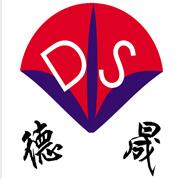- Biological buffer(21)
- Blood collection tube additives(12)
- Carbomer(2)
- trinder's reagent(9)
- Enzyme(14)
- Chemiluminescence reagent(9)
| Hubei xindesheng Material Technology Co., Ltd | |
|---|---|
| Country: | China |
| Tel: | +8618971041571 |
| E-mail: | zjing9632@gmail.com |
| QQ: | 2198447049 |
| Skype: | Chat Now! |
How does Desheng improve the stability and inactivation of virus preservation solution
Release time: 2021-10-09
Analyzing the liquid culture medium used to transport nasopharyngeal swab virus specimens, it can be seen that the current liquid culture medium mainly focuses on two types of problems. Completely preserve the original characteristics and activity of the virus, how to inactivate the virus in the inactivated preservation solution and effectively protect the nucleic acid from nuclease degradation, and how to ensure that the storage conditions of the sample preservation solution after the specimen are collected are mild and the storage time is as long as possible Issues such as lengthening; on the other hand, the main concern is how to improve product stability and inactivation of the preservation solution. In these two aspects, Desheng Company has made corresponding treatments for the virus preservation solution.
Non-inactivated preservation solution-improve product stability
Many existing non-inactivated sample preservation solutions on the market are rich in nutrients such as amino acids and proteins, which can easily breed microorganisms, and antibiotics cannot withstand sterilization methods such as high temperature and irradiation. In order to maintain the stability of the product, the non-inactivated virus preservation solution developed and produced by Desheng does not contain lysis salt, but the preserved virus has better integrity and higher detection rate. In addition to nucleic acid detection, it can also be used for other research. It has antibacterial and antifungal effects; bovine serum albumin (BSA) as a protein stabilizer can form a protective film on the protein shell of the virus, making it difficult to decompose and ensuring the integrity of the virus; constructed by Hanks buffer A neutral environment helps increase the survival time of the virus and the stability of infection. Furthermore, we are very strict in the control of bacterial colonies, so as to avoid the phenomenon of bacterial growth in the product.
Inactivated preservation solution-improve product inactivation
Relevant research on the inactivated sample preservation solution shows that the virus still survived after treatment with the commonly used virus lysis agent AVL and RLT buffer, which suggests that we should carry out corresponding measures for the inactivation ability of the inactivated sample preservation solution against specific viruses. Clinical evaluation. Other studies have shown that once ethanol is added, AVL can completely inactivate the EBOV virus, but this is not compatible with downstream automatic nucleic acid extraction systems. This suggests that while improving the inactivated sample storage solution, we should also verify the impact on downstream nucleic acid extraction and detection.
The inactivated virus preservation solution exclusively developed by Desheng and university experts contains special protein denaturants and nucleic acid stabilizers. The protein denaturants can quickly destroy the secondary structure of the virus coat protein and inactivate the virus. When the clinical sample with the new coronavirus is mixed with the preservation solution, the virus in the sample is affected by the lysis solution, and the protein shell is quickly destroyed, and this damage is irreversible. The nucleic acid stabilizer can stably store viral nucleic acid at room temperature without degradation, and can be stably stored at 37°C for 7 days, which is very conducive to the preservation of samples for nucleic acid testing.

